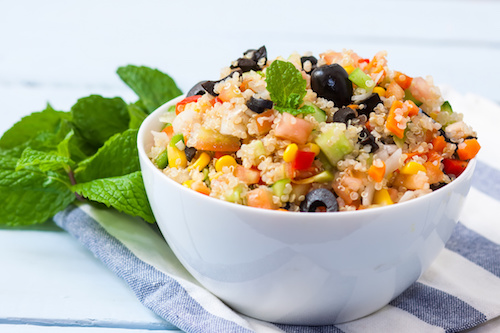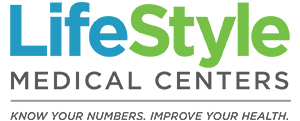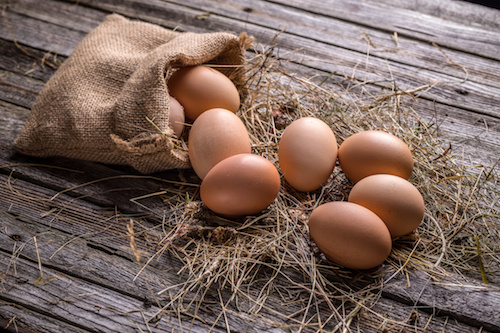No matter how dedicated you are to your weight-loss program, hunger pangs can quickly derail your progress. When your stomach growls, it’s tempting to reach for the first edible item you see, whether it’s healthy or not. Avoiding temptation is as simple as adding high protein foods to your diet. With so many choices available, you’re sure to find a few tasty selections to add to your meal plan.
What are the Advantages of High-Protein Foods?
In addition to building and repairing tissues and keeping your bones and muscles strong, eating high protein foods also reduces cravings. Dropping blood sugar levels trigger hunger. Unfortunately, when you’re hungry enough, a candy bar can seem like an excellent snack choice. Although that piece of candy may satisfy you for an hour or two, before long, you’ll be thinking about your next snack.
Eating high protein foods helps you avoid cravings because it takes you much longer to digest these types of foods. Thanks to the slow digestion process, your blood sugar level won’t fluctuate as much, which will help you avoid a case of the munchies. Protein needs vary by individual; a Registered Dietitian can assist you with determining your own unique needs, but a good rule of thumb for most is to incorporate a form of protein with each meal and/or snack for sustained satiety throughout the day.
What Types of Foods Are High in Protein?
Plenty of the foods you already enjoy are packed with protein. Foods high in protein include:
Quinoa
Quinoa, a grain originally grown in South America, has now become a staple for health-conscious Americans. The grain contains all nine amino acids, making it a source of complete protein.

Add the grain to salads, use it instead of rice in fried-rice dishes, or add it to your morning pancakes. You’ll find plenty of quinoa recipes online.
Eggs
These are an excellent source of protein and contain about seven grams of protein. You may have been avoiding eggs due to concerns that they may increase your total cholesterol level. Although eggs were thought to affect cholesterol in the past, recent research has indicated that an egg a day won’t increase your heart disease risk if you’re healthy. So go ahead and enjoy a scrambled egg for breakfast, or pack a hard-boiled egg in your lunch bag.
Nut Butters
Nut butters such as peanut butter or almond butter are excellent, plant-based sources of protein that require no refrigeration – this makes them a great protein option when you are on the go. For a lean alternative to a sandwich or crackers, try your favorite nut butter with apple slices or celery sticks.
Chicken and Fish
Chicken breasts and ground turkey are excellent lean protein options – just be sure to limit your intake of dark meat and skin. While the skin is tasty, it’s also full of saturated fat. We could all afford to add more fish to our diets. Fish is an excellent source of protein, and many types of fish, including salmon, mackerel and tuna, also contain heart-healthy omega-3 fatty acids.
Hummus
Traditional hummus is a blend of chickpeas (garbanzo beans), tahini (sesame seed paste), olive or canola oil and spices – yet another plant-based protein source to celebrate. This flavorful dip also packs a punch of fiber to keep you feeling fuller longer. Try it with your favorite raw vegetable for a quick snack.
Dairy Products
Dairy products are a good source of calcium and high in protein. Looking for a high protein food that’s also low in calories? Try cottage cheese. One cup contains 25 grams of protein and about 200 calories. Greek yogurt is another excellent source of protein, offering as much as 18 grams in one serving.
Chia Seeds
Do you need an easy way to add protein to your diet? Add a handful of chia seeds to your favorite dishes. Just two tablespoons of the seeds contain more than nine grams of protein. The seeds are an excellent addition to salads, puddings, smoothies, muffins and breads
Soy
Foods made from soybeans, such as tofu and tempeh, are high in protein and low in calories and saturated fat. Including meatless protein sources like soy in your diet is a desirable habit for controlling cholesterol levels. Tempeh “meat” balls or tofu stir-fries provide a tasty way to increase your protein intake.
Do you need help adding high protein foods to your diet? Call us today to schedule your appointment with one of our registered dietitians.
Sources:
Harvard T.H. Chan School of Public Health: Eggs and Heart Disease
https://www.hsph.harvard.edu/nutritionsource/eggs/
WebMD: Good Protein Sources
http://www.webmd.com/fitness-exercise/guide/good-protein-sources
Prevention: 10 Best Meatless Protein Sources
http://www.prevention.com/food/healthy-eating-tips/10-best-meatless-protein-sources
Harvard T.H. Chan School of Public Health: Protein
https://www.hsph.harvard.edu/nutritionsource/what-should-you-eat/protein/
WebMD: How Much Protein Do You Need?
http://www.webmd.com/diet/healthy-kitchen-11/how-much-protein


